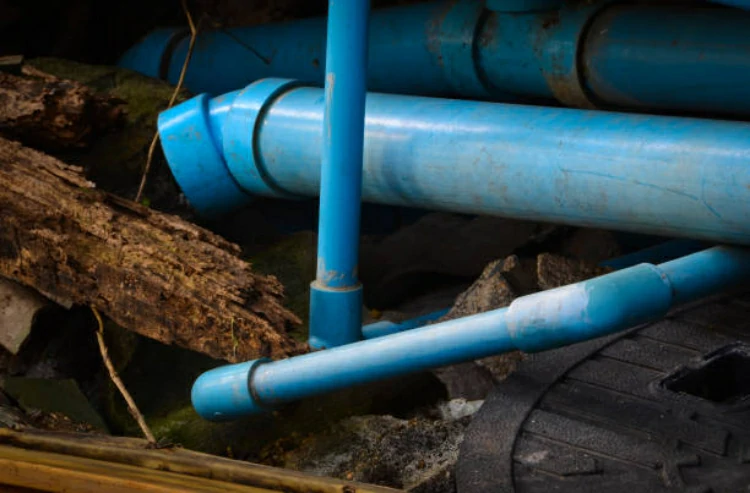Introduction:
While PVC pipes are durable, they can experience damage over time, like any infrastructure. In such cases, it’s essential to employ effective repair techniques to restore the functionality and integrity of the PVC pipe system. This article explores various repair methods and solutions for PVC pipes.
1. Common Causes of PVC Pipes Damage
Before delving into repair techniques, it’s crucial to understand the common causes of PVC pipe damage. Identifying the root cause helps in selecting the appropriate repair method and preventing future issues.
Physical Damage: PVC pipes may suffer physical damage due to external factors such as impact from heavy machinery, vehicular traffic, or accidental excavation. This can result in cracks, fractures, or deformations in the pipe walls.
Corrosion: While PVC pipes are resistant to corrosion, they can still be affected by certain chemicals or environmental conditions. Corrosive substances, high temperatures, or abrasive materials may cause degradation or weakening of the pipe material.
Joint Failure: Improper installation, faulty joints, or excessive stress on pipe connections can lead to joint failure in PVC pipe systems. Leaks or separations at joints are common issues that require repair.
Freezing and Thawing: In cold climates, freezing and thawing cycles can cause PVC pipes to expand and contract, leading to stress fractures or ruptures. Proper insulation and protection are essential to prevent damage from temperature fluctuations.
2. Repair Techniques for PVC Pipes
Several repair techniques are available for addressing damage to PVC pipes, ranging from simple DIY solutions to professional interventions. The choice of repair method depends on the extent of damage, accessibility of the pipe, and available resources.
Epoxy Putty: Epoxy putty is a versatile repair material that can be used to patch small leaks or cracks in PVC pipes. Simply knead the epoxy putty until it becomes pliable, then apply it to the damaged area, molding it to form a tight seal. Once cured, the epoxy putty provides a durable and waterproof repair.
Pipe Sleeving: Pipe sleeving involves inserting a sleeve or patch into the damaged section of the PVC pipe to reinforce and seal the area. Sleeves typically consist of flexible materials like rubber or fiberglass, secured in place using adhesives or clamps. This method is suitable for repairing larger cracks or fractures.
Heat Welding: Heat welding, also known as solvent welding, is a technique used to fuse PVC pipe sections together. It involves applying heat and solvent cement to the joint area, causing the PVC material to soften and bond together. Heat welding creates a strong and watertight seal, making it ideal for repairing joint failures or connections.
Pipe Relining: Pipe relining is a more advanced repair method that involves inserting a new liner or coating into the existing PVC pipe to restore its structural integrity. Typically, the liner comprises epoxy resin or cured-in-place pipe (CIPP) material, inserted into the damaged pipe using inversion or pull-through techniques. Once in place, the liner forms a seamless and durable barrier against leaks or corrosion.
3. Considerations for PVC Pipes Repair
When planning PVC pipe repairs, consider various factors to ensure effective and safe repair processes.
Material Compatibility: When selecting repair materials or methods, it’s essential to ensure compatibility with PVC pipe materials and existing system components. Using incompatible materials can lead to further damage or deterioration.
Safety Precautions: Repairing PVC pipes may involve working with hazardous chemicals, heat sources, or pressurized systems. It’s important to follow safety guidelines, wear appropriate protective gear, and take necessary precautions to prevent accidents or injuries.
Professional Assistance: While some PVC pipe repairs can be done DIY, complex or extensive damage may require professional assistance. Experienced technicians or plumbers have the knowledge, skills, and equipment to perform repairs safely and effectively.
Preventive Maintenance: To minimize the need for repairs and prolong the lifespan of PVC pipe systems, regular preventive maintenance is essential. This includes inspecting pipes for signs of damage, addressing minor issues promptly, and implementing measures to prevent future damage or deterioration.
Conclusion:
PVC pipe repair techniques offer effective solutions for addressing damage and maintaining the integrity of PVC pipe systems. Whether it’s patching leaks, reinforcing joints, or relining damaged sections, there are various methods available to suit different repair needs. By understanding the causes of PVC pipe damage and employing appropriate repair techniques, stakeholders can ensure the longevity, reliability, and performance of PVC pipe infrastructure for years to come.
Contact
IFANPLUS is a specialized product series launched by IFAN, primarily covering plastic pipes, fittings, and various types of valves. We offer PPR and PVC pipes in German and American standards, ensuring the high quality and reliability of our products. IFANPLUS valve products include a variety of valves, from PPR valves to other diverse copper valves, catering to your specific requirements. Whatever product you need, IFANPLUS will be your reliable partner. Here is our contact information.
We will reply your email or fax within 24 hours.
You can call us at any time if there is any question on our production.
For more information,pls visit our webside https://www.ifanplus.com/
Pls Mailto: [email protected]






